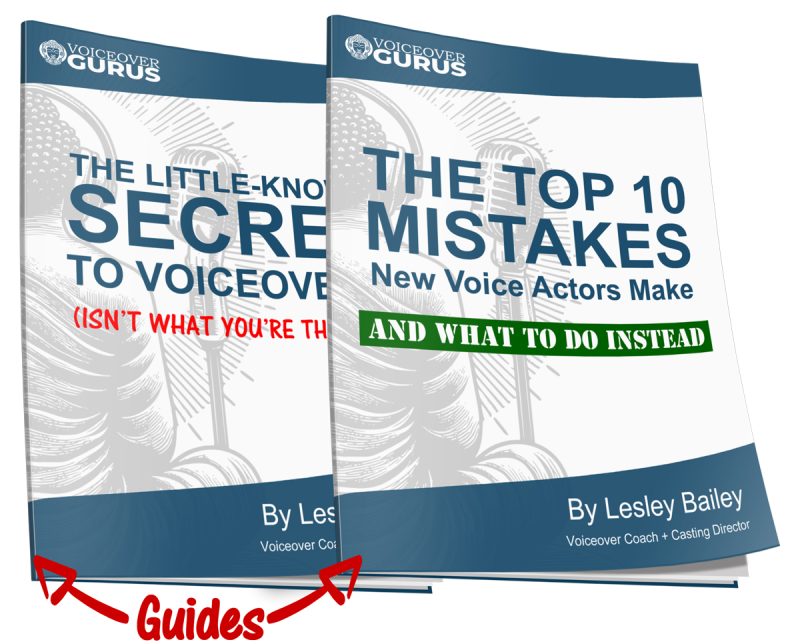How to Sound More Conversational in Voice Acting (And a Real Example to Learn From)
One of the most common pieces of direction you’ll hear in voiceover today is:
“Sound more conversational.”
But what does that actually mean?
It doesn’t mean casual mumbling. It doesn’t mean being overly perky. And it definitely doesn’t mean “just talk like yourself,” because when a mic is in front of you and a script is in your hand, your natural speech patterns tend to vanish.
In this blog post, we’ll break down how to actually sound more conversational in your voice acting, even when reading a commercial script. And then you’ll get to watch one of my students do exactly that—in a short McDonald’s read that nails the tone today’s casting directors are craving.
? The Conversational Voiceover: What It Really Means
“Conversational” doesn’t mean robotic casualness—it means sounding like a real person with a real point of view. It means dropping the “announcer voice” and getting out of performance mode.
✅ 1. Relax Your Throat
When you’re nervous or pushing energy, tension sneaks into your throat and jaw. That tightness creates a forced or strained tone. A conversational read needs you to be physically relaxed, especially in the throat and shoulders.
Pro tip: Yawn before your read to release throat tension and reset your vocal placement.
✅ 2. Lower Your Volume
This may seem counterintuitive, but a loud delivery often sounds less natural. When you raise your volume, your energy can spike and your pitch can rise, which reads as “salesy” or “pushy.”
Imagine you’re reading the script to a friend over coffee. No need to project. Just connect.
✅ 3. Slow Down (But Don’t Drag)
Conversational reads aren’t rushed. They’re paced like natural speech—varying with thought, emphasis, and emotional tone.
Pro tip: Listen closely in the video below. My student takes her time—not dragging, but allowing the message to breathe.
✅ 4. Stay Smiling—But Grounded
Smile reads are still a thing—but casting directors now want nuance in that smile. Instead of a big commercial grin, think calm, confident warmth.
✅ 5. Connect to the Message
Ultimately, conversational delivery is all about connection. That means finding the why behind the words. Even if it’s a 10-second spot for fast food, there’s a feeling underneath the script. A warmth. A reason to care.
? Real Example: Watch My Student Nail the Conversational Tone
Now that we’ve talked through the elements of a natural, grounded delivery, let’s take a look at a real-world example.
In this short clip, one of my voiceover students reads a McDonald’s script as part of her commercial training. Listen closely for how she:
- Slows down and allows each phrase to land
- Speaks with a relaxed, slightly lower tone
- Uses gentle inflection instead of dramatic emphasis
- Delivers with a warm, believable smile
- Feels like she’s speaking to someone—not at them
She didn’t get there by accident—this is the result of practice, guidance, and learning to trust her instincts.
▶️ Watch the Clip:
? Try It Yourself: Practice with the Same Script
Want to try your own conversational read using the same script?
? McDonald’s Commercial Script (Practice Copy)
“You asked for it, you got it…
The McRib is back at McDonald’s for a limited time.
Smothered in tangy barbecue sauce, served on a toasted bun.
You’re welcome.”
Take a few minutes to read it out loud a few different ways:
- Too fast: Notice what gets lost.
- Too big/salesy: Does it feel believable?
- Now try relaxed, slower, with a gentle smile.
Imagine someone you care about getting up early and feeling tired—and you’re gently reminding them that something warm and comforting is waiting.
Pro tip: Record your read and listen back. What feels grounded? What still feels “read-y” vs. real?
? Final Thoughts: Being Conversational Is a Skill—Not Just a Style
Don’t get discouraged if it doesn’t come easily right away. Most of us grew up thinking “performance” meant being bigger, louder, and clearer. But the truth is, today’s voiceover world is all about subtlety and truthfulness.
Being conversational takes more than talent—it takes awareness, intention, and practice. The moment you start mastering it, your reads will shift from “good” to genuinely engaging.
Stay tuned for more practice tips—and if you’d like feedback on your version of the script, feel free to reach out or tag me in your recording.
Keep voicing,
Lesley Bailey ~ voiceover coach


 Hi! I’m Lesley Bailey. I’m an award-winning Casting Director, Voiceover Coach, Demo Producer, and Consultant with over 30 years “in the trenches”. I love helping voice actors bring scripts to life with authenticity and confidence.
Hi! I’m Lesley Bailey. I’m an award-winning Casting Director, Voiceover Coach, Demo Producer, and Consultant with over 30 years “in the trenches”. I love helping voice actors bring scripts to life with authenticity and confidence.